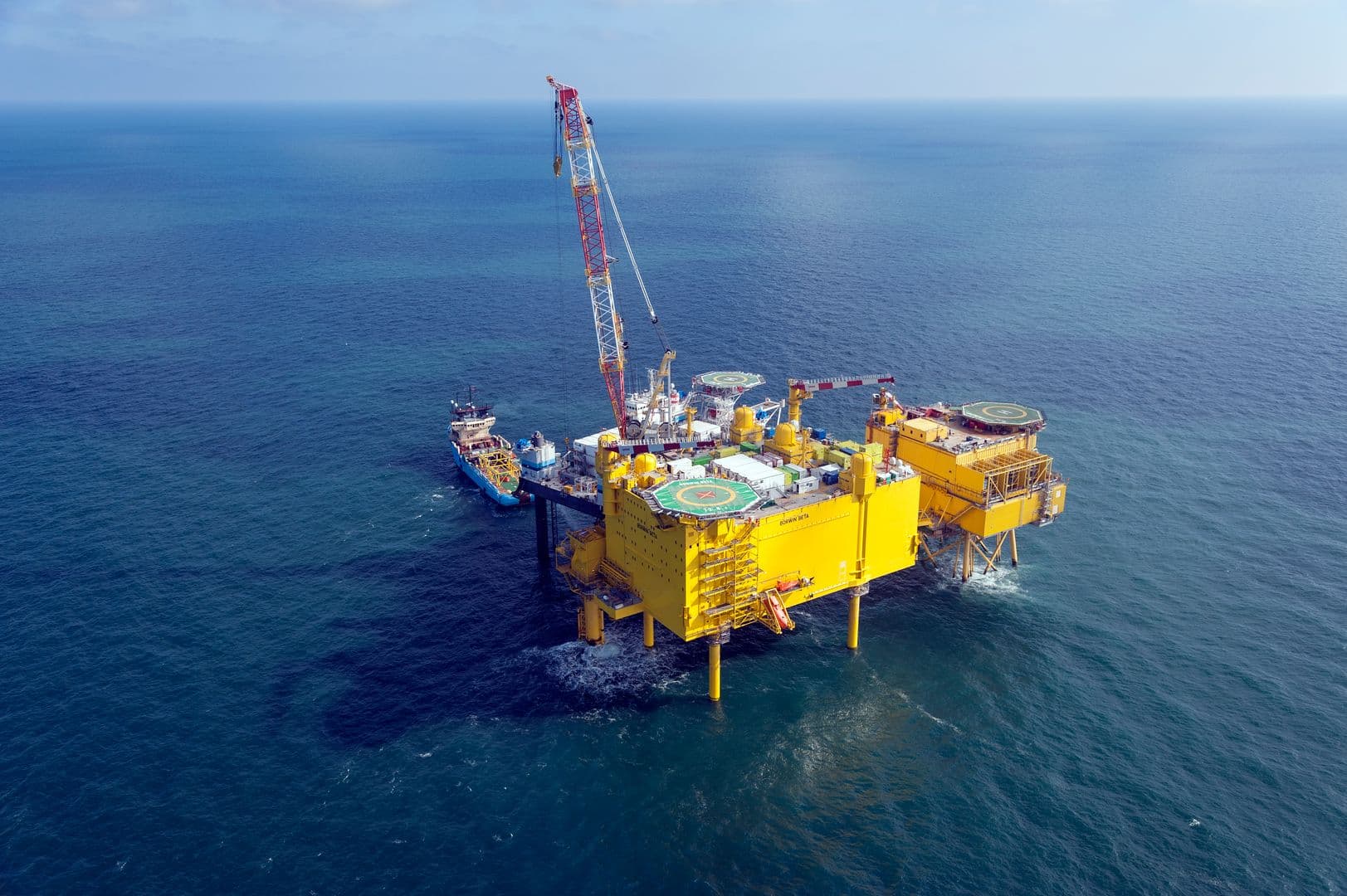
Converter
"Sockets" at sea and on land
Converter stations at sea and on land are the heart of an offshore grid connection: They ensure that the electricity generated at sea can be fed into the power grid. Converters have the task of adapting the voltage and converting the current from three-phase to direct current or from direct current back to three-phase current. Two converter stations are required for this process: one at sea and one on land.
The electricity generated at sea is first collected in the wind farm's own transformer station and fed to the converter platform at sea via a three-phase power cable with a voltage of 155 kilovolts (kV). Inside the converter, power transformers increase the voltage to the converter operating voltage of 320 kV. The three-phase current is then converted into direct current and smoothed. This makes the DC system easier to control. This is important for the stability of the electricity supply, because the wind energy generated at sea is a volatile energy source. This means that it is subject to fluctuations due to the weather as well as seasonal and daily fluctuations and is therefore not produced evenly but fluctuating, e.g. depending on wind conditions. As a result, the volatily-generated wind power often contains so-called vibrations. These are disturbing in the European grid, where a "smooth" frequency of 50 Hertz is required.
From the DC area of the platform, two DC cables (one positive and one negative pole) lead down into the seabed and from there are led towards the mainland to the so-called landing point. This point marks the transition from sea to land. From here, the electricity is transported to the shore side converter station via an underground cable, converted back into three-phase current and transformed to the correct voltage. In the transformer station, the wind power is then fed into TenneT's transmission grid.
Converter platforms are installed at water depths of 27 to 40 metres and project between 40 and 60 metres out of the water. This means that the part of the platform above water is about twice as high as the Brandenburg Gate. The stations are usually more than 100 kilometres from the mainland and therefore not visible from land.